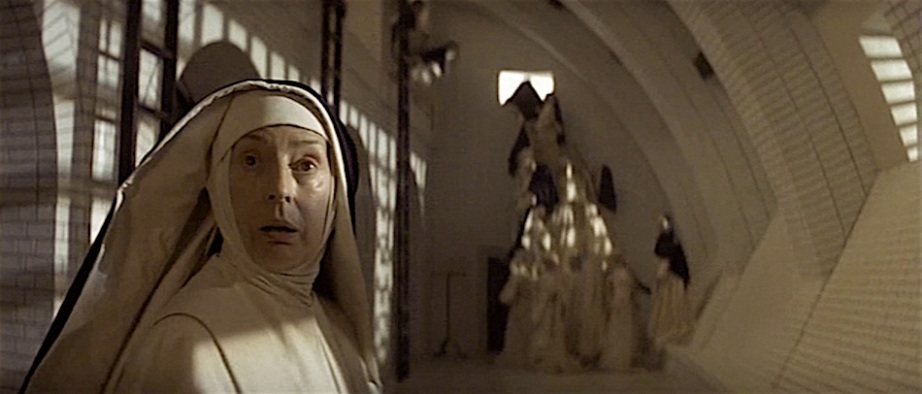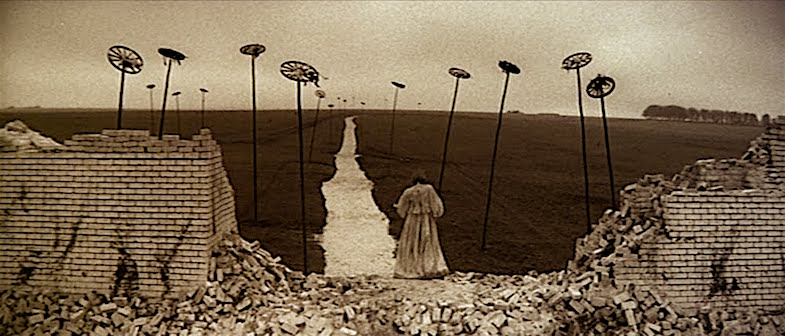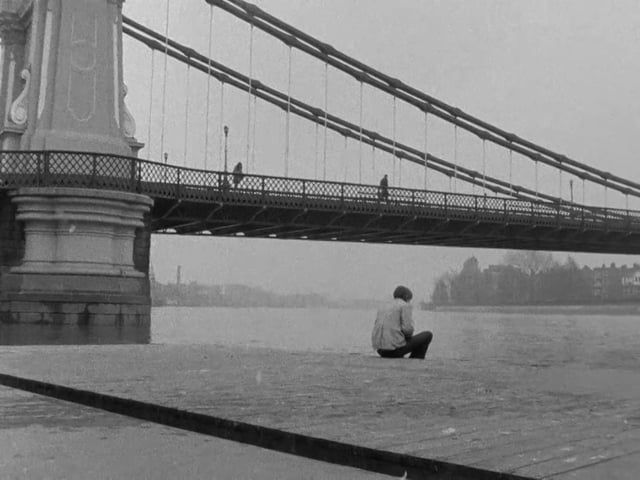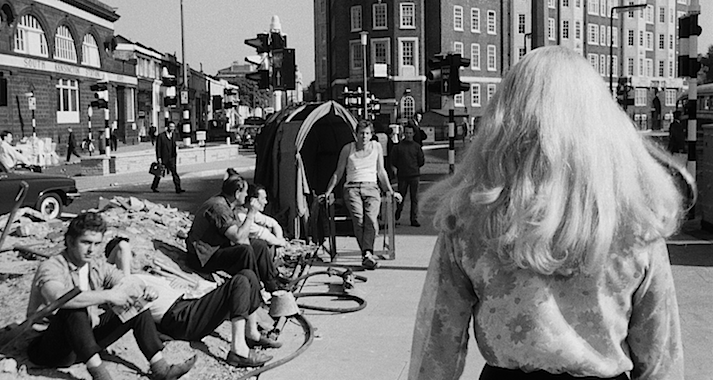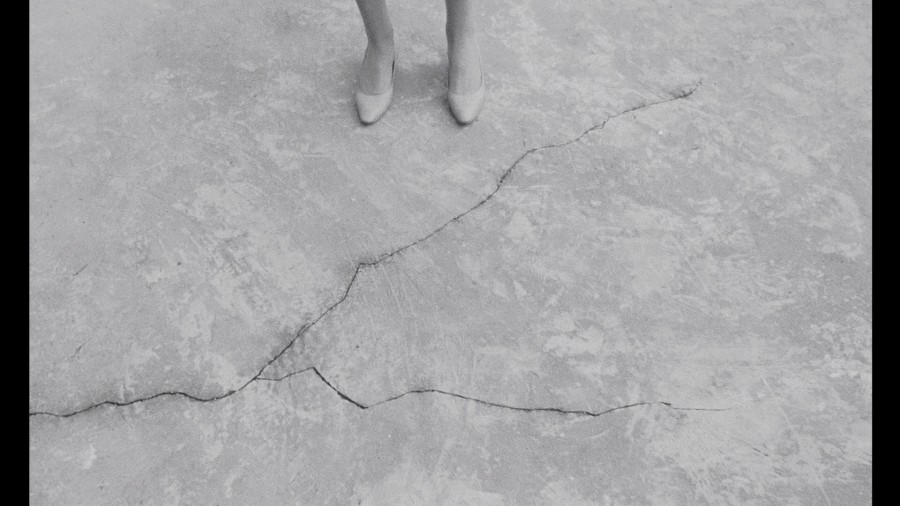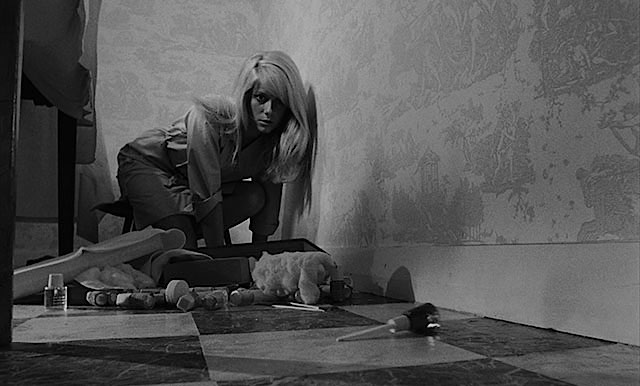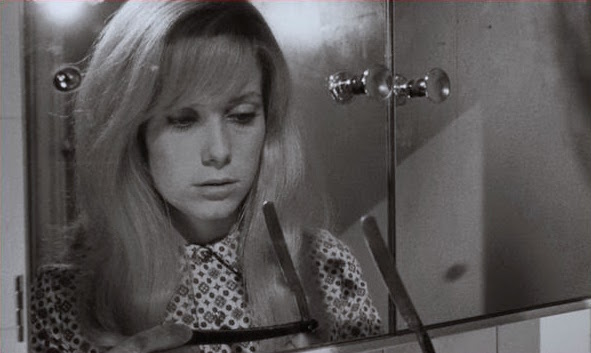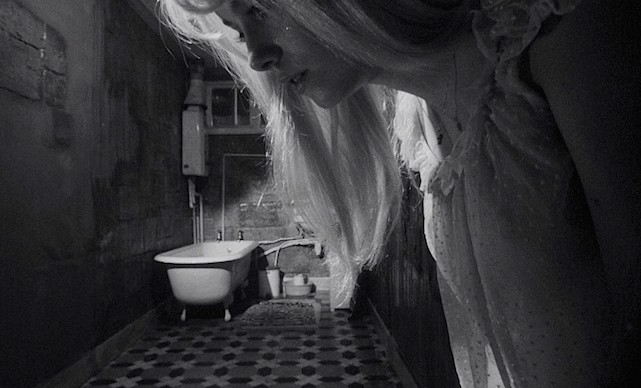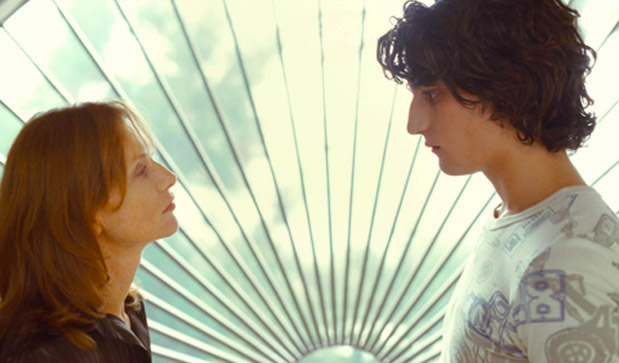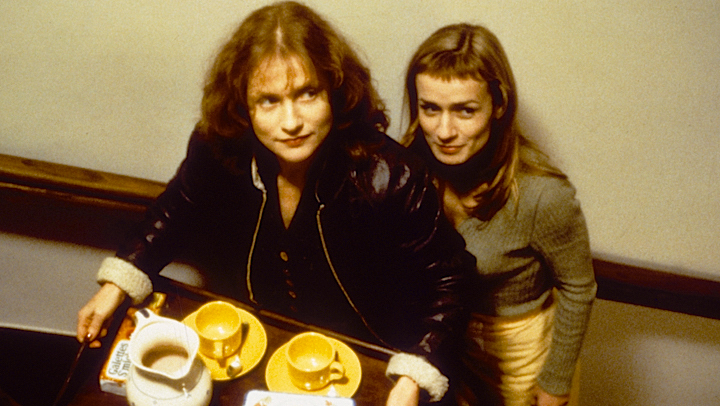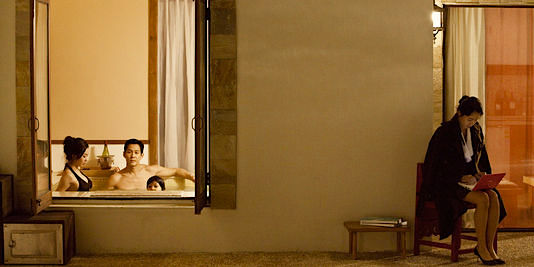There was once a time when Madonna presented ideas far deeper than that of “Pop Star.” While those days seem to have past, many of the ideas she presented and asserted remain.

Lucky for us a female film artist adapted Phoebe Gloeckner’s insightful novel for the screen.
Kristen Wiig / Bel Powley / Alexander Skarsgård
The Diary of a Teenage Girl
Marielle Heller, 2015
Photograph | Sam Emerson
One of the last times I recall finding myself thinking about something she co-created was her 2000 single:
“Skin that shows in patches.
Strong inside but you don’t know it.
Good little girls they never show it.
When you open up your mouth to speak, could you be a little weak?
Do you know what it feels like for a girl?
Do you know what it feels like in this world…” — Madonna
Aside from being catchy, this pop song did elevate itself more than a little by what it had to say about the ever-mounting challenges and societal/cultural indifference and injustices perpetuated against and projected upon the idea of female identity. Sadly, the iconic superstar chose to have her then filmmaker husband create the song’s vid-clip. The video for this song was crass and violent for reasons of shock-value vs. offering any level of content truly relevant toward a song that seemed tied to a young woman attempting to indicate the cruel patriarchal views to a young male. A missed opportunity to say the least.

Marguerite Duras’ novel about a young woman’s sexual awakening received a very male-eroticized translation from Jean-Jacques Annard.
Jane March / Tony Ka Fai Leung
The Lover
Jean-Jacques Annard, 1992
Cinematography | Robert Fraisse
It has taken a tragic and centuries long tyranny for women to finally make significant strides in the areas of filmmaking. Such recently formed groups like The Alliance for Women in Media have smartly utilized social media to promote, promote and organize female film artists. While the idea of the female filmmaker is not at all new, the voices of these film artists that have managed to gain attention are painfully few. Those voices that have managed to obtain success have largely been built on celebrity [think Nora Ephron, Julie Delpy, Barbra Streisand, Penny Marshall, Elaine May, Susan Sideman, Anne Fontaine, Diane Keaton or Kathryn Bigelow] or controversial films that were either too scandalous or provocative [think Claire Denis, Lina Wertmüller, Patty Jenkins, Liliana Cavani, Lynne Ramsay, Mary Harron, Mia Hansen-Løve, Doris Dörrie or Catherine Breillat] to be ignored.
Note: this statement and the listed artists is not intended toward the quality of work or respective importance. However significant gains have been made in just the last ten years.

One of the most important historic moments in US history is captured by a female director.
Carmen Ejogo as Coretta Scott King
SELMA
Ava DuVernay, 2014
Cinematography | Bradford Young
As Film Art moves forward we will be given more opportunities to see female characters written and presented by women. It is interesting to experience the “knee-jerk” reaction of fellow cinephiles when I bring this up. It seems that the majority of people seem to feel it is not all that important or different to have a female vs. male filmmaker. From a technical proficiency standpoint it really does not make a difference. However, good luck at convincing most Big Money producers or film studios that there isn’t. The shift in this perspective is resulting from peer and societal pressures. Sexism and Racism still run the show, but this might be changing. What interests me is seeing how a female filmmaker might be able to bring a more balanced depiction of female characters and their situations.

A great deal more than “a sex comedy” that the film’s marketing team led us to believe.
Juno Temple & Kathryn Hahn deliver potent performances in a vastly under-rated film.
Afternoon Delight
Jill Soloway, 2013
Cinematography | Jim Frohna
Would Ava DuVernay’s Selma have been different if it had been made by a man? A white woman? I suspect so, but Selma was crafted with such a steadfast and sure handed — it is hard to say. Would Jill Soloway’s under-appreciated Afternoon Delight have been different if it had been written/directed by a male filmmaker? I’d say most certainly so. Would Diary of a Teenage Girl have presented themes of sexuality and identity have been handled in a different manner by a male? Would Mia’s frustrations, anger and sexual awakening been explored differently if a man had directed Andrea Arnold’s screenplay for Fish Tank? I’d say most definitely. Or what if we stop and imagine what might have happened if Lynne Ramsay’s husband, Rory Stewart Kenner, had directed their screenplay adaptation of Lionel Shriver’s We Need to Talk About Kevin? Would Michelle Williams’ Margot had received a more typical level of exploration had Sarah Polley not written and directed Take This Waltz? Would a male director had handled Father of My Children in the same way that Mia Hansen-Løve so grimly caring as she was able?

Even brightly painted walls are unable to hide the challenges of a young woman coming of age within a council estate.
Katie Jarvis
Fish Tank
Andrea Arnold, 2009
Cinematography | Robbie Ryan
If we think back to some of the more controversial European films of the past 50 years it brings up an even stronger concern. Imagine if Pier Paolo Pasolini had directed Liliana Cavani’s The Night Porter? …A film that still makes both female and male audiences squirm some 40+ years after it was originally released. Try to imagine if Jacques Audiard had directed Claire Denis’ White Material. Actually this might be the true exception to the rule. I do not think there are any filmmakers who think and film anywhere near to the manner in which Denis approaches her distinctive and intimate films.

An odd sort of buddy film morphs into something very different in the hands of this respected female film artist. And guess what? She secured one of the most interesting American cinematographers working — who happens to be a woman.
Joslyn Jensen / Kentucker Audley
FUNNY BUNNY
Alison Bagnall, 2015
Cinematography | Ashley Connor
Even so, just think what might have happened. A similar exception might rule for both Catherine Breillat and Josephine Decker — both of whom seem to have a very unique and intimate connection to their work. Decker’s voice is still taking form and I think we are approaching an era where it will be allowed to do just that. The same did not happen for the likes of Claudia Weill and Elaine May. Two incredibly gifted artists who had the unluck of making a flop each. Male filmmakers can make a flop movie and move on, the same has not been true for women.

Sidney Pollack, Mike Nichols, Woody Allen and Gary Marshall would have simply shrugged and moved on to a new project. However all it took was one box office flop to bring Elaine May’s directorial career to an abrupt end.
Dustin Hoffman / Warren Beatty
ISHTAR
Elaine May, 1987
Cinematography |Vittorio Storaro
An even more vexing concern for female artists comes up when we do think of all the inaccuracies of treatment for male filmmakers vs. female directors. Men can misbehave. Does anyone out there think that a female artist would have been allowed to put a cast / crew through emotional tantrums thrown by David O. Russell during the making of I Heart Huckabees? You are living in a make believe reality if you do. You would also be in an equally confused reality if you think a male PEO could have gotten away with this behavior on a Hollywood set. Ironically, the artist who paid the price for Mr. Russell’s bizarre behavior ended up being an innocent bystander. Unlike her co-stars, Isabelle Huppert and Dustin Hoffman, Lily Tomlin refused to sit quietly while Russell blasted them with unprofessional rage-fueled insults.

I guess she should have known she had no right to defend herself and the crew against and unprofessional male director.
Dustin Hoffman / Lily Tomlin
I Heart Huckabees
David O. Russell, 2004
Cinematography | Peter Deming
It was as if the highly respected and skilled actress had made a grave error against Hollywood’s Good ‘Ol Boy Club when she dared to respond to her director’s cruelty. Ms. Tomlin’s film career suffered a great deal due because she was unwilling to sit passively and suffer the indignity of O’Russell’s tyranny. This sad result of a YouTube leak has been little discussed. David O. Russell had already come to blows with George Clooney a few years earlier. Clooney seemed to earn “respect points” for standing up to the bullying. Tomlin did not fare as well. She was largely relegated to playing nightclub gigs. It would take more than a couple of years before she found worthy television / film prospects. Yet David O. Russell continued to excel up The Hollywood Food Chain despite not only his behavior but the box office fail of I Heart Huckabees.

An experimental, disturbing and fascinating independent film challenged all the rules of a male-dominated art form.
Robert Longstreet / Sophie Traub
Thou Wast Mild and Lovely
Josephine Decker, 2014
Cinematography | Ashley Connor
However, I’ve gone way off point here. There are a slew of amazing films dealing with the psychology of women. Films that are rightly revered and studied. In no way would I want to discount these films, but it is interesting to think about them from the perspective that they were imagined, written and directed by men. Are these depictions any less valid because women were relegated to the role of “actor” vs. creator of these unforgettable cinematic masterpieces? It is an interesting talking point.
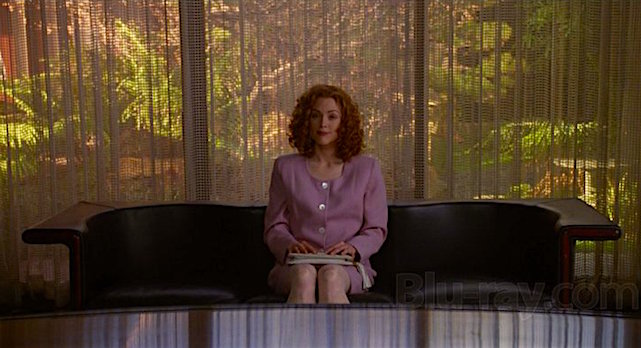
A woman plagued by a toxic world or muted oppression? A male director proves he can make films focused on women without error.
Julianne Moore
SAFE
Todd Haynes, 1995
Cinematography | Alex Nepomniaschy
I was recently thinking of four films in particular. I don’t pretend to know the full answer to this hind-sighted reflection. For starters I am not a filmmaker, but most importantly I am a white male. These films were made by professional filmmakers — all of whom were white men.

Millie aims for perfection within a man’s nightmare…
Shelley Duvall
3 Women
Robert Altman, 1977
Cinematography | Charles Rosher Jr.
The first film that crosses my mind regarding this line of questioning is one of my personal favorite movies: Robert Altman’s 3 Women. I’m not sure this is a good film to discuss in this vein as the entire film can be ascribed to dream-logic. Altman never made it a secret that the entire film was born of a personal nightmare. It is also no secret that this incredible examination of identity and surrealism was largely formed by the participation of all three actors in the title roles. This is most particularly true of Shelley Duvall.

The battle for identity…
Sissy Spacek / Shelley Duvall
3 Women
Robert Altman, 1977
Cinematography | Charles Rosher Jr.
Almost all of the film’s trajectories emanate from Duvall’s Millie‘s actions. Another aspect of this film that more or less eliminates it from this topic is the fact that the entire film does feel like a manifestation of male-based fears about women. This is not to say that 3 Women is not a fully potent vision of identity horror, but it does not actually seem to present itself entirely based female psychology. This wildly experimental dark comedy morphs into one of the more disturbing films you are likely to see. It is full of female energy, but it never feels as if it is trying to make a statement about anything other than these three very specific three female characters.
The second film I think of this respect is a more likely candidate for this type of analysis: John Cassavetes’ A Woman Under the Influence. Experiencing a John Cassavetes film often leads the viewer to the mistaken idea that every aspect of what is being seen is an improvised experimental film. This is never the case.
Cassavetes was an articulate film writer as well as director. He had a very specific story to tell and he told it in his unique visionary way. Certainly not one to run from collaboration and open to ideas — he was nearly always set on how and what he wanted his films to say. He was blessed to share his life with one of the most important film actors to ever breathe, Gena Rowlands. However it is a major mistake to think that as Mabel, Rowlands was free-forming her dialog as she went along. It is both to her credit as an actor and her husband’s credit as a filmmaker that it feels that way. Even Rowlands’s Mabel odd and/or quirky hand gestures and ticks were already thought out in the filmmaker’s head. Do a Google and you will find images of Cassavetes acting out the hand movements and gestures for Rowlands to incorporate into her performance. It is also somewhat crucial to remember that Cassavetes main interest in his film storytelling was the pursuit of love. Yet it would seem difficult for even this great filmmaker to not note that there was something removed from that going on here.

Seeking intimacy and human warmth, but only finding guilt and confusion.
A One Night Stand and Gena Rowlands
A Woman Under the Influence
John Cassavetes, 1974
Cinematography | Al Ruban
A Woman Under the Influence works on all levels and remains a fascinating and deeply disturbing screen capture of a woman in full-tilt emotional breakdown. How or if she is full able to “heal” and return to life is more than a little ambiguous. What is clear in the film is that she is loved and loves, but this might not be enough for her to survive the life in which she has found herself. And this is one of the primary reasons this 1974 film continues to feel alive and real. The hair styles, the decor, the cars and clothing may all be dated — but the situations all feel profoundly current.
Mabel is not well. She is losing her grip on sanity. Something that the film never bluntly states but shows is that she is also deteriorating in imposed isolation, loneliness and suffocating within what begins to feel like a sort of familial pathology. The Longhetti Family is not well. The working-class husband / father is over-worked and seems more than a little under-educated. With the exception of a paycheck, he seems to leave all other responsibilities to his wife, Mabel. She is left alone with three children in a sort of lower-middle class hell.

“All of a sudden, I miss everyone…”
Gena Rowlands
A Woman Under the Influence
John Cassavetes, 1974
Cinematography | Al Ruban
She loves and adores her children, but they are all she has in the way of connection to the world. She may or may not be a bit smarter than her husband, but it does not really matter. We can see that she is overwhelmed. We can also see that her husband hasn’t a clue as to why or how to help her. He takes to what can only be described as domestic abuse toward his wife. He ultimately pulls his children into emotionally-damaging situations and allows indulgences into inappropriate behavior as a father. Mabel may not be a reliable parent, but she seems to be trying harder to set a better example than her husband. The 21st Century reaction to Peter Falk’s Nick is to take offense and become angry. However his performance and the film itself is so stunningly human, it is almost impossible to dislike Nick. We know he cares and is simply lost. The resulting film is powerful, sad and oddly inspiring in that it offers us a bit of hope for this woman.

When film acting no longer feels like “fiction.”
Gena Rowlands
A Woman Under the Influence
John Cassavetes, 1974
Cinematography | Al Ruban
There was and will only ever be one John Cassavetes. A Woman Under the Influence is cinematic masterwork from every angle.
But have you ever wondered what this movie might have been like if a woman had directed it?
Would we be given a bit more information regarding those gestures or movements to understand the pressures of both the inner and outer worlds of Mabel? Would Nick have had more room to understand or even less? Would he have become a savior or more of a victimizer? When it comes to A Woman Under the Influence, one thing that was discussed when it was first released has come much more clearly to the forefront with the passage of time: there is an idea presented which is far less ambiguous today as was back in the 1970s. As viewers we do not really know if it is Mabel who is having the real problem here. Mabel appears to be more a victim of circumstance than one of mental illness. Is The Woman ill or is she simply a experiencing the logical result of a life so severely limited and oppressed? Perhaps it is Nick who really needs help. Mabel just might need to demand more freedom or walk away. Would the entire situation of this family be illuminated in a different way had it been in the hands of female filmmaker? Honestly, I’m not sure I really want to know…
The third and final film is also one of the greatest films ever made. Ingmar Bergman’s Persona is a milestone work of art for more reasons than I’d be comfortable attempting to articulate. This largely experimental film is less about the core of Human Identity as it is about the twisted manipulation of identity by one of the two female characters. Bibi Andersson plays Alma. A young and inexperienced Psych Nurse assigned the task of caring for a highly respected stage and film actress played with equal mastery by Liv Ullmann. This is a Surrealist take on human cruelty and ideas of identity. It is also female-centric. Yet as much as it is concerned with female psychology, it is equally concerned with experimenting against the normal conventions of cinematic storytelling. Ingmar Bergman and his legendary cinematographer, Sven Nyqvist are both concerned with conveying ideas through image and editing even more than what the two actors present through performance and dialogue.

Too fragile to handle the world, so maybe she wants to try and manipulate it?
Liv Ullmann
PERSONA
Ingmar Bergman, 1966
Cinematography | Sven Nykvist
We see both women react to their respective worlds and situations. Soon enough we see them react to each other. In uncomfortable silence as her patient has withdrawn from speech and human contact, Alma begins to find herself in the unique position in having a person of note who serves as her private audience. She begins to share her deepest and most intimate secrets to her Elisbet. One doesn’t need a degree in psychology to realize that Liv Ullmann’s character is somehow using her nurse for her own perverse needs and pleasures. We might think that it is the patient who is falling apart, but viewers quickly realize that the character who truly comes to the end of her mental and emotional rope is the nurse.

Silent prey or captive audience?
Liv Ullmann / Bibi Andersson
PERSONA
Ingmar Bergman, 1966
Cinematography | Sven Nykvist
One of the splinters the film that makes is truly jolting, but it is never fully clear as to why. Was this always going to happen or has Ullmann’s Elisabet pushing buttons and limits for her own sick gain? I suspect most of us would agree that this revolutionary bit of filmmaking is at least a partial off-spring from Freudian thought. In fact, it seems that Bergman was playing off Freud’s idea of both primary and normal narcissism. Persona almost seems to be constructing itself off Freud’s self-titled definitions of Demential Praecox and Paraphrenics (sp?) — Elisabet appears to an off-shoot example of Schizophrenia who is incapable of love or loving. Alma is the hysterical woman unable to escape the grasp of a sociopathic woman hellbent on ruining her. It would be irresponsible and lazy to dismiss Persona on sexist grounds as it comes from a very specific point in time and achieved a whole new sort of cinematic language. Persona is still a gut punch to the senses. In many ways, Ingmar Bergman’s film remains ahead of time. However it is firmly grounded in the world of Art Horror or Psychological Thriller. It is not and can’t be weakened by ideas that we now might deem as outmoded.
But it does beg a bit of examination regarding the ways in which Bergman crafted his two female characters? It is possibly unnecessary, but curious to wonder what a female film artist might have done with the ideas of female human beings in this situation. Would a female or a Feminist-perspective have changed this film for the different or better? Would Alma‘s memory of her sexual exploit be articulated differently? Would Elisabet‘s reactions and actions have been different? Would a sickly little boy reach out for the female faces or would he be replaced by a little girl? Would a female perspective lead us further than Bergman’s conclusion?

Sharing secrets turns into a mentally dangerous act…
Liv Ullmann / Bibi Andersson
PERSONA
Ingmar Bergman, 1966
Cinematography | Sven Nykvist
Would it all still break the film strip?
Perhaps of all male filmmakers, Ingmar Bergman was the most interested in female-centric movies. He is not alone. Paul Mazursky, Claude Chabrol, Jacques Demy, Woody Allen and David Lynch are just a few of the white male filmmakers who pursue the stories and even the POV of female characters. Much of their work feels right, but how to know? Can a man really ever know what it feels like for a girl?
Or perhaps more on point: can a male film artist really ever know what it is like to be a woman? …much less even partially understand what it is like to be in her head?
Judging by many films, it would seem more than a little possible.

Intent to harm or heal?
Bibi Andersson / Liv Ullmann
PERSONA
Ingmar Bergman, 1966
Cinematography | Sven Nykvist
We have yet to have an equal opportunity to experience female film art perspective in equal measure. Let’s hope that we see and hear more from Female Film Artists and Women In Media as we move forward. It has never been more important to support films made by women and people of color.
Aren’t we all pretty much bored with seeing the vast majority of movies limited to the white male perspective?
Matty Stanfiled, 1.19.2016



